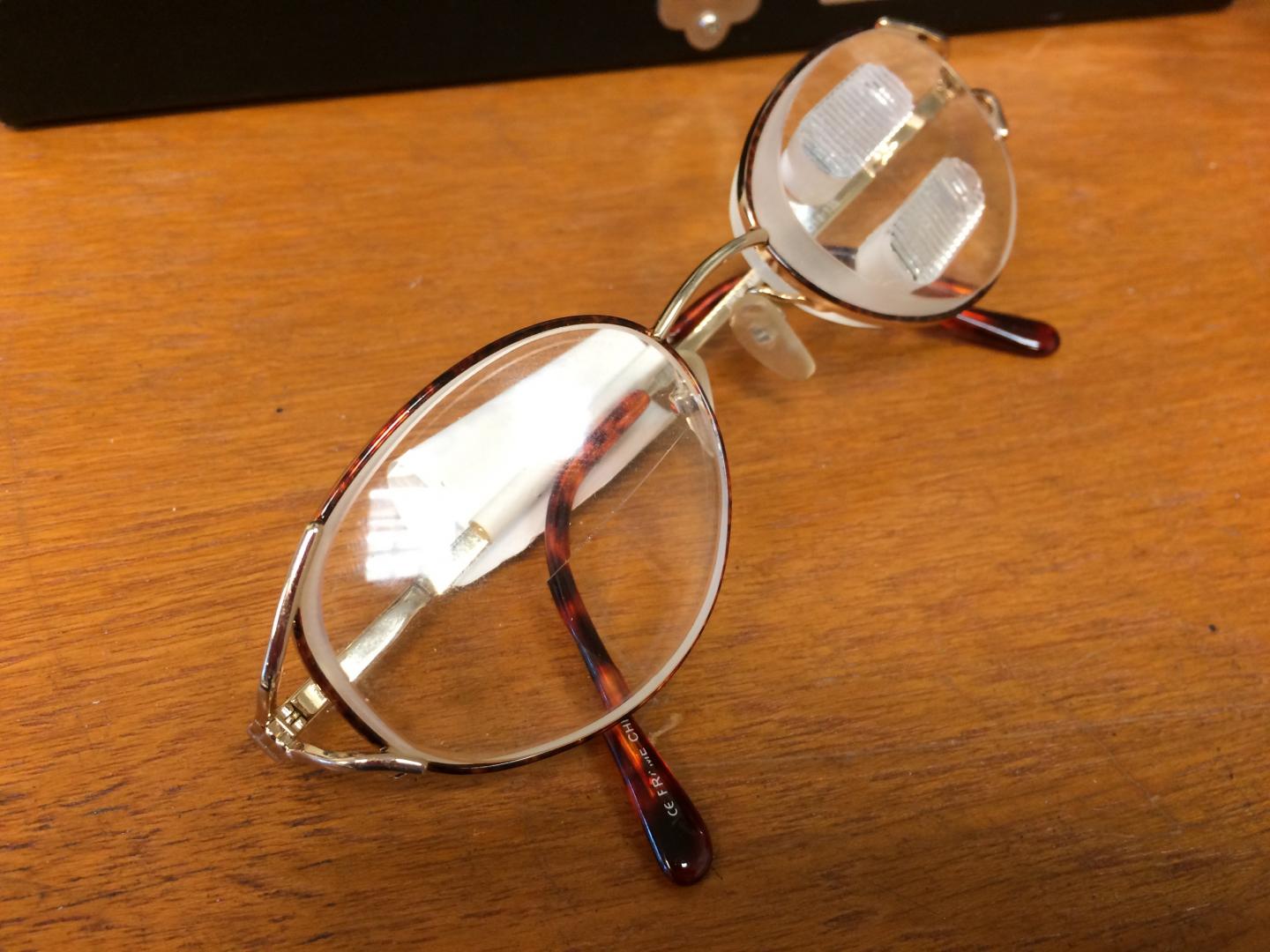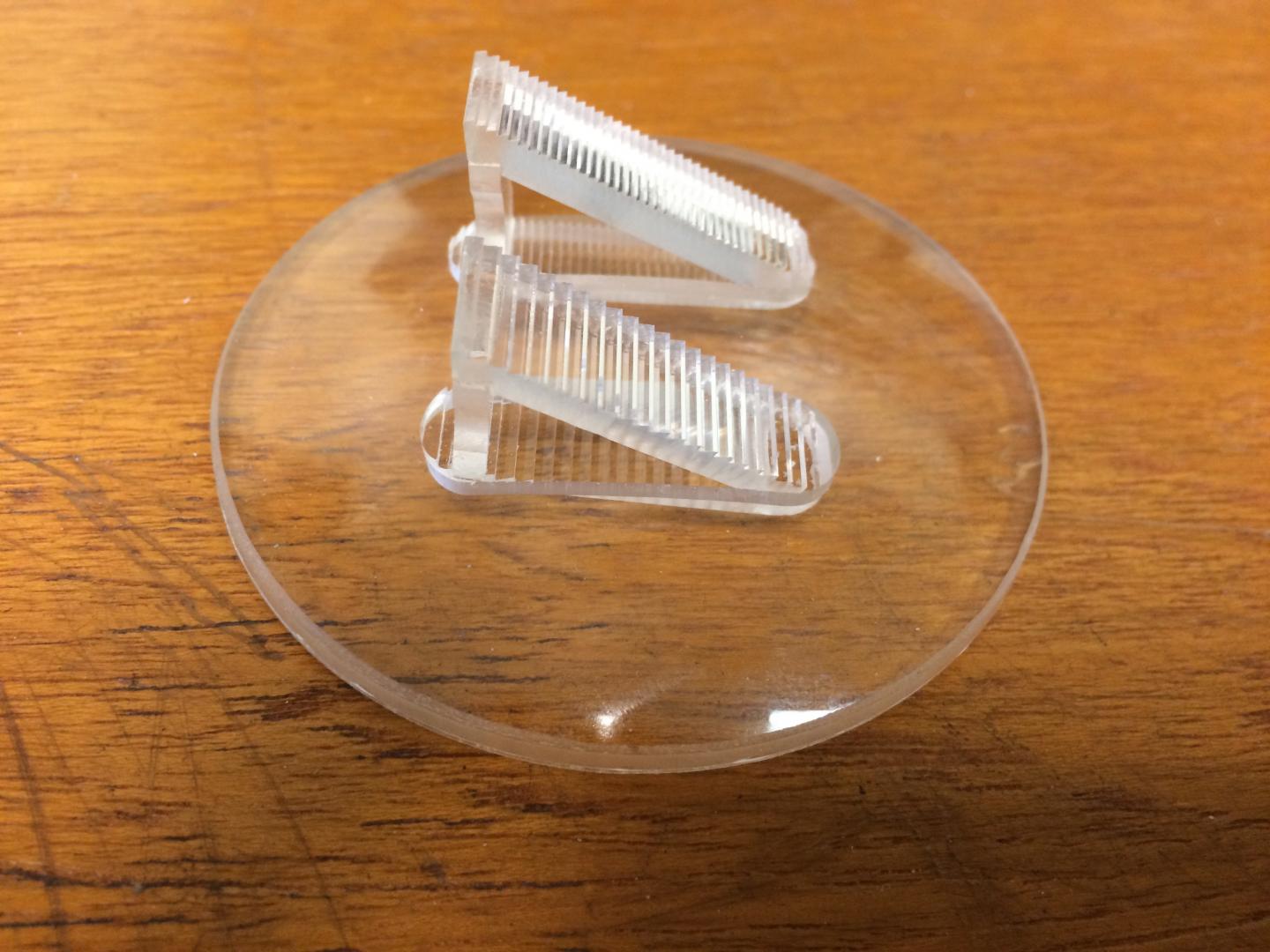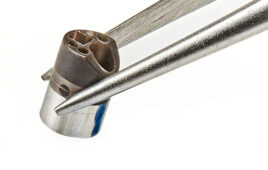Researchers from the Schepens Eye Research Institute of Massachusetts Eye and Ear and Harvard Medical School have designed three new eyeglasses using high-power prisms to optimally expand the visual fields of patients with hemianopia, a condition in which the visual fields of both eyes are cut by half. The new designs, described in Optometry and Vision Science, address some limitations of existing prism correction available to this population.
Impairing either the left or right halves of the visual fields in both eyes, hemianopia affects more than one million Americans and is most commonly caused by stroke, brain tumors and head trauma. Hemianopia reduces the natural visual field of about 180 degrees to a mere 90 degrees. People with hemianopia have difficulty detecting hazards on their blind sides, leading to collisions, falls and other accidents. Patients with hemianopia cannot legally drive in Massachusetts, where a visual field of 120 degrees is required.

By embedding the current prism in a spectacle lens that has prismatic power in the opposite direction, the image shifting effect is increased by the summation of the power of both prism types. This design allows for up to 36 degrees of expansion to the visual field on the patient’s blind side. This design permits 5 degrees of scanning range to the blind side with full effect. (All images credit: Massachusetts Eye and Ear)
One method of treatment for hemianopia is to expand the visual field with prisms mounted on or embedded in eyeglasses. A research team led by Eli Peli, M.Sc., O.D., FAAO, Professor of Ophthalmology at Harvard Medical School and the Moakley Scholar in Aging Eye Research at the Schepens Eye Research Institute of Mass. Eye and Ear, has been developing prism devices to expand the visual field for these patients for more than 15 years. Their most recent commercially available device introduced in 2013, the peripheral prism glasses, has been shown to expand the visual fields of patients with hemianopia by as much as 30 degrees, optically shifting objects from the blind side of the visual field to the seeing side.
With the goal of expanding the visual field on the blind side even farther, the researchers explored new optical techniques to create higher power image shifting devices designed to bend the light farther than the 30-degree limit of conventional prisms. In conventional prisms, increasing the angle eventually results in the light bending back into the prism, trapped by what is called “total internal reflection.”
“It’s not just that we need a device with a higher angle of light shifting to let them see farther,” said Dr. Peli (pictured right). “We also want the new devices to provide the additional range of vision when the patient scans their eyes in both directions. The current prism devices support such flexibility only when scanning into the seeing side.”

To increase the power of the peripheral prism, the bi-part double Fresnel prism combines two prism segments angled to each other. This design allows for up to 43 degrees of expansion to the visual field on the patient’s blind side and an increase to 14 degrees scanning range into the blind side.
The authors introduced three new high-power prism concept devices in the Optometry and Vision Science paper:
Yoked Prisms in the Carrier Lens
By embedding the current prism in a spectacle lens that has prismatic power in the opposite direction, the image shifting effect is increased by the summation of the power of both prism types. This design allows for up to 36 degrees of expansion to the visual field on the patient’s blind side. This design permits 5 degrees of scanning range to the blind side with full effect.
Bi-Part Double Fresnel Prism
To increase the power of the peripheral prism, the bi-part double Fresnel prism combines two prism segments angled to each other. This design allows for up to 43 degrees of expansion to the visual field on the patient’s blind side and an increase to 14 degrees scanning range into the blind side.
Mirror-Based Periscopic Prism
The third approach – not yet fully manufactured — uses a pair of angled mirrors to deflect the image from the blind side to the seeing side — not unlike prism correction. Due to the mirror-based design, this device is distortion-free and does not suffer from the color splitting effect of prisms, which reduces image clarity. It may allow for up to 40 degrees of expansion to the visual field on the patient’s blind side with much wider scanning range permitted.
The researchers intend to fully design and implement the mirror-based periscopic prism and also begin testing all three designs in patients with hemianopia.
“The new optical devices can improve the functionality of the current prism devices used for visual field expansion and may find use in various other field expansion applications such as a mobility aid for patients with tunnel vision,” Dr. Peli said.




